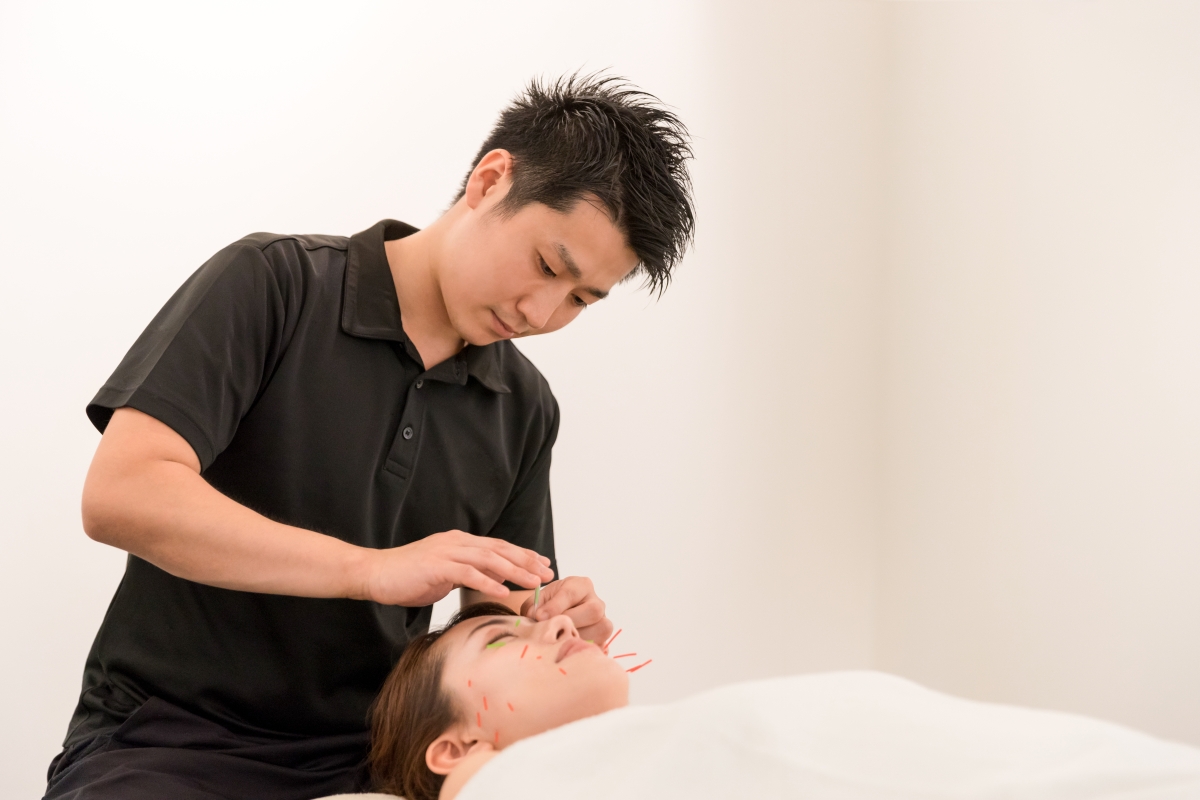Career Overview
Traditional Chinese medicine practitioners and acupuncturists assess, treat and help prevent diseases, disorders or imbalances using acupuncture, tui na (massage), herbology, lifestyle counselling and other holistic health approaches.
Job Titles
Duties
In general, traditional Chinese medicine practitioners and acupuncturists:
- Diagnose diseases or physical, mental and emotional disorders, as well as imbalances and injuries within the framework of traditional Chinese medicine
- Treat patients using a variety of tools, depending on their registration title
- Explain procedures, risks and benefits of treatments
- Evaluate and document patients' progress
- Develop treatment plans and work collaboratively with other health care professionals
Earnings
Earnings is income that workers receive in exchange for their labour. Depending on the type of employment, earnings can be in the form of wages (hourly), salaries (fixed monthly or annual) or self-employed earnings.
Work Environment
# Workers Employed
1,525% Employed Full Time
17%Most traditional Chinese medicine practitioners and acupuncturists work in private practice, including group or team practices. Others are employed by health clinics, rehabilitation centres and other health and wellness facilities. They may work regular business hours, evenings or weekends.
Traditional Chinese medicine practitioners and acupuncturists may feel bodily strain from extended periods of standing, sitting or holding postures during treatment. They also risk injury when lifting and moving tables and other equipment, or from giving tui na (massage therapy) treatment. They may experience compassion fatigue from caring for patients.
Career Pathways
There are four career pathways within this profession.
Registered acupuncturists:
- Treat patients by using acupuncture and other stimulation techniques that include heat, light (including laser), acupressure and tui na (massage therapy), magnets, scraping (gua sha), suction (ba guan) and electric currents
- May prescribe exercises and suggest dietary therapies (known within the industry as food cures)
Registered traditional Chinese medicine herbalists:
- Prescribe, mix and dispense herbal formulas and dietary supplements to treat patients
- May recommend food cures
Registered traditional Chinese medicine practitioners:
- Treat patients by using acupuncture and other stimulation techniques that include heat, light (including laser), acupressure and tui na (massage therapy), magnets, scraping (gua sha), suction (ba guan) and electric currents
- May prescribe, mix and dispense herbs and herbal formulas and administer treatment using other botanical/natural medicines or dietary supplements
- May prescribe exercises, breathing and movement therapy (qi gong or tai chi) and food cures
Registered traditional Chinese medicine doctors:
- Treat patients using advanced techniques in acupuncture and other stimulation techniques that include heat, light (including laser), acupressure and tui na (massage therapy), magnets, scraping (gua sha), suction (ba guan) and electric currents
- Treat patients with complex health and medical needs and assume care for challenging or complex patients by referral from acupuncturists, traditional Chinese medicine practitioners and herbalists
- May prescribe, mix and dispense herbs and herbal formulas and administer treatment using other botanical/natural medicines or dietary supplements
- May prescribe exercises, breathing and movement therapy (qi gong or tai chi) and food cures
- May develop treatment plans in collaboration with other health care professionals
Related Careers
Occupational Interests
It’s important to understand what kinds of occupations align with your interests.
For more about occupational interests visit Skills for the Future Workforce > Characteristics.
Here are the top occupational interest(s) for this career profile:
Education, Training and Skills
Acupuncturists and traditional Chinese medicine herbalists must:
- Complete a three-year diploma program majoring in acupuncture from a public or private traditional Chinese medicine college or university program.
Traditional Chinese medicine practitioners must:
- Complete a four-year diploma program in traditional Chinese medicine from a public or private traditional Chinese medicine college or university program.
Traditional Chinese medicine doctors must:
- Complete a five-year diploma program in traditional Chinese medicine from a public or private traditional Chinese medicine college or university program.
In addition, they all must:
- Complete two years of liberal arts or sciences study (of at least 60 credits) in an accredited college or chartered/approved university
- Complete clinical training within a traditional Chinese medicine college or university program
- Successfully pass the credentialling examinations and register with the College of Complementary Health Professionals of BC (CCHPBC)
- Keep their skills current throughout their careers
Traditional Chinese medicine practitioners and acupuncturists who are certified by a regulator elsewhere in Canada can apply for the same certification from the regulator in B.C. Under the terms of the Canadian Free Trade Agreement (CFTA), most applicants who are transferring their credentials from elsewhere in Canada will not be required to complete additional training or testing. However, the B.C. regulator may ask applicants to provide further information such as a letter of good standing, references or a criminal record check.
For those who trained outside of Canada and never received certification from any Canadian jurisdiction, a full assessment is likely needed. Most occupational regulators have a process for assessment and recognize internationally trained applicants.
Contact the College of Complementary Health Professionals of BC (CCHPBC) for details on how to apply for certification in B.C.
For information about labour mobility in Canada, visit www.workersmobility.ca.
View a list of Professional Regulatory Authorities in B.C.
Education programs in B.C.

Top Skills
Every job calls for a certain set of skills. Knowing those skills is the first step in finding a good career fit.
Here, you will find the 10 most relevant workplace skills. Some are more important to achieving success in a certain career than others. These skills may come naturally to you or you may need to gain them through education, training and experience.
See the list of work-related skills below, ranked in order of importance for this career. Check out the list and see if this career matches your skills—take that first step!
Giving full attention to what other people are saying, taking time to understand the points being made, asking questions as appropriate, and not interrupting at inappropriate times.
Being aware of others’ reactions and understanding why they react as they do.
Talking to others to share information effectively.
Using logic and reasoning to identify the strengths and weaknesses of alternative solutions, conclusions or approaches to problems.
Actively looking for ways to help people.
Understanding written sentences and paragraphs in work-related documents.
Considering the relative costs and benefits of potential actions to choose the most appropriate one.
Being able to solve novel, ill-defined problems in complex, real-world settings.
Keeping track of and assessing your performance, other individuals, or organizations to make improvements or take corrective action.
Communicating effectively in writing as appropriate for the needs of the audience.
Labour Market Statistics
Discover data, facts and information that have been gathered and analyzed. Learn about the characteristics of the economy and labour market in B.C.
Employment
Find out about employment types and trends by region and industry.
Employment
1,525Employment by Region







| Region | Employment | % Employment of this Occupation |
|---|---|---|
| Cariboo | 30 | 2.0% |
| Kootenay | 55 | 3.6% |
| Mainland/Southwest | 1,065 | 70.1% |
| North Coast and Nechako | 10 | 0.7% |
| Northeast | 0 | 0.0% |
| Thompson-Okanagan | 65 | 4.3% |
| Vancouver Island/Coast | 295 | 19.4% |
Labour Market Outlook
The B.C. Labour Market Outlook is a 10-year forecast of the expected supply and demand for labour in the province. It’s usually updated every year. The purpose is to provide British Columbians with the knowledge to make informed decisions on careers, skills training, education and hiring.
Forecasted Job Openings (2024-2034)
540Forecasted Job Openings
Forecasted Employment Growth Rate
Composition of Job Openings
Job Openings by Region (2024-2034)







| Region | Job Openings | Avg. Annual Employment Growth |
|---|---|---|
| Cariboo | 10 | 1.1% |
| Kootenay | 20 | 1.2% |
| Mainland/Southwest | 390 | 1.6% |
| North Coast and Nechako | Not available | Not available |
| Northeast | Not available | Not available |
| Thompson-Okanagan | 20 | 1.1% |
| Vancouver Island/Coast | 100 | 2.4% |
Industry Highlights
Learn about the opportunities in B.C.'s major industries, including employment trends, earning potential, locations of work and more.
Forecasted Job Openings by Industry
| Industry | Job Openings (2024-2034) |
|---|---|
| Health Care and Social Assistance | 510 |
| Repair, Personal and Non-Profit Services | 10 |
| Retail Trade | 10 |
Insights from Industry
Growing public interest in holistic medicine is creating opportunities for acupuncturists and other traditional Chinese medicine practitioners throughout B.C., including in small towns and cities.
Most traditional Chinese medicine practitioners and acupuncturists in B.C. are self employed.
Resources
-
British Columbia Association of Traditional Chinese Medicine and Acupuncture Practitioners (ATCMA)atcma.org
-
Canadian Alliance of Regulatory Bodies of Traditional Chinese Medicine Practitioners and Acupuncturists (CARB-TCMPA)carb-tcmpa.org
-
Chinese Medicine and Acupuncture Association of Canada (CMAAC)www.cmaac.ca
-
College of Complementary Health Professionals of BC (CCHPBC)cchpbc.ca/








